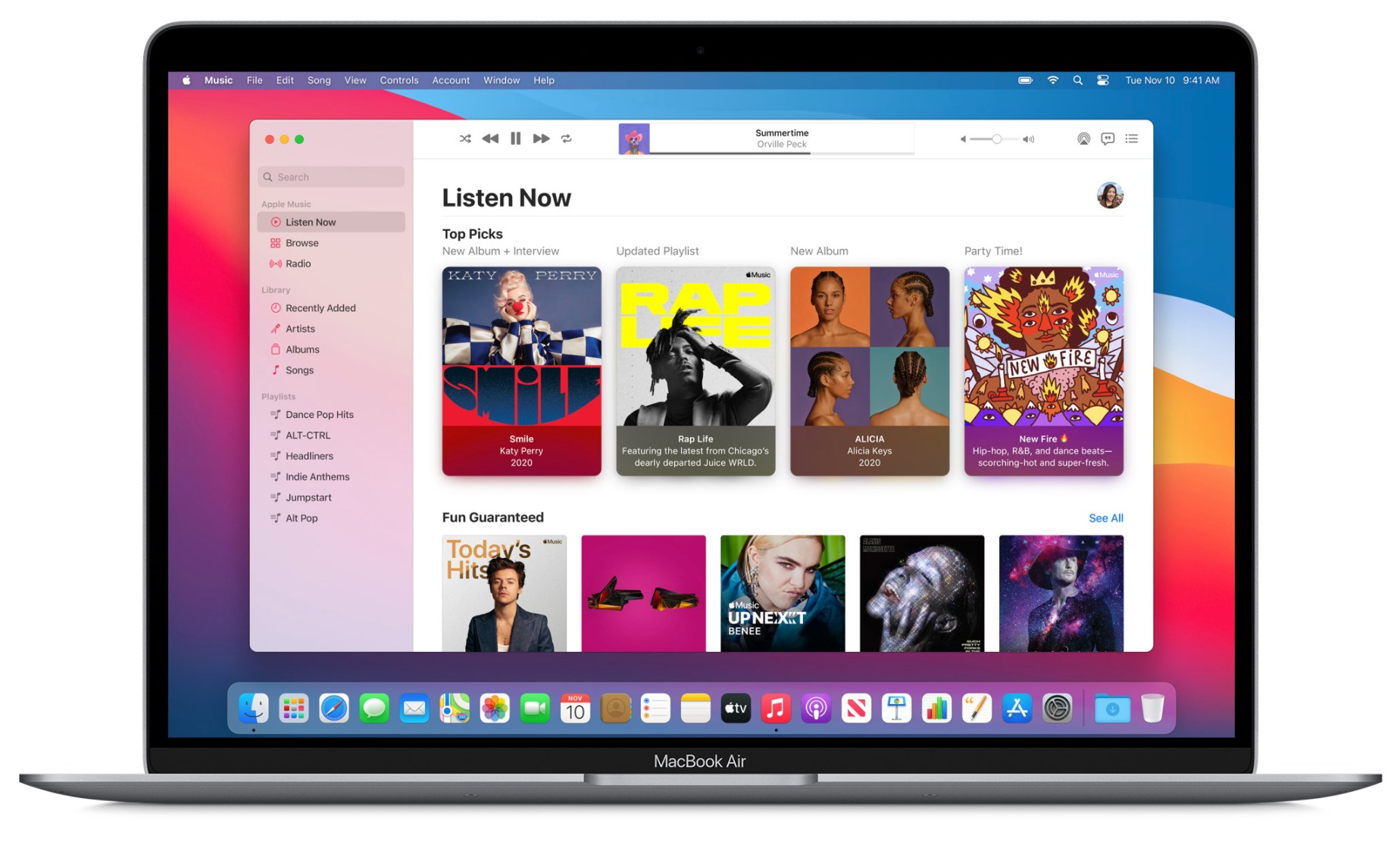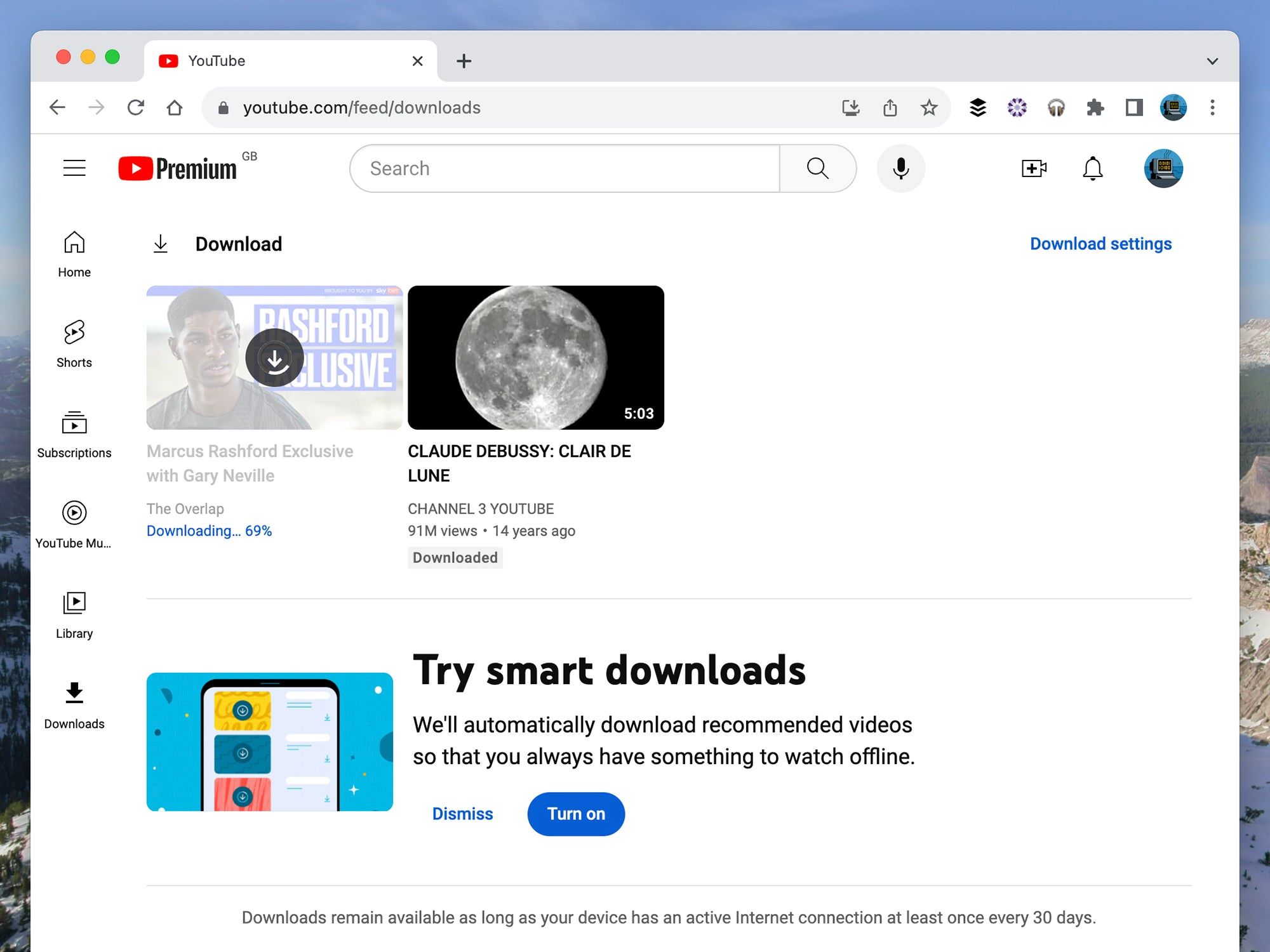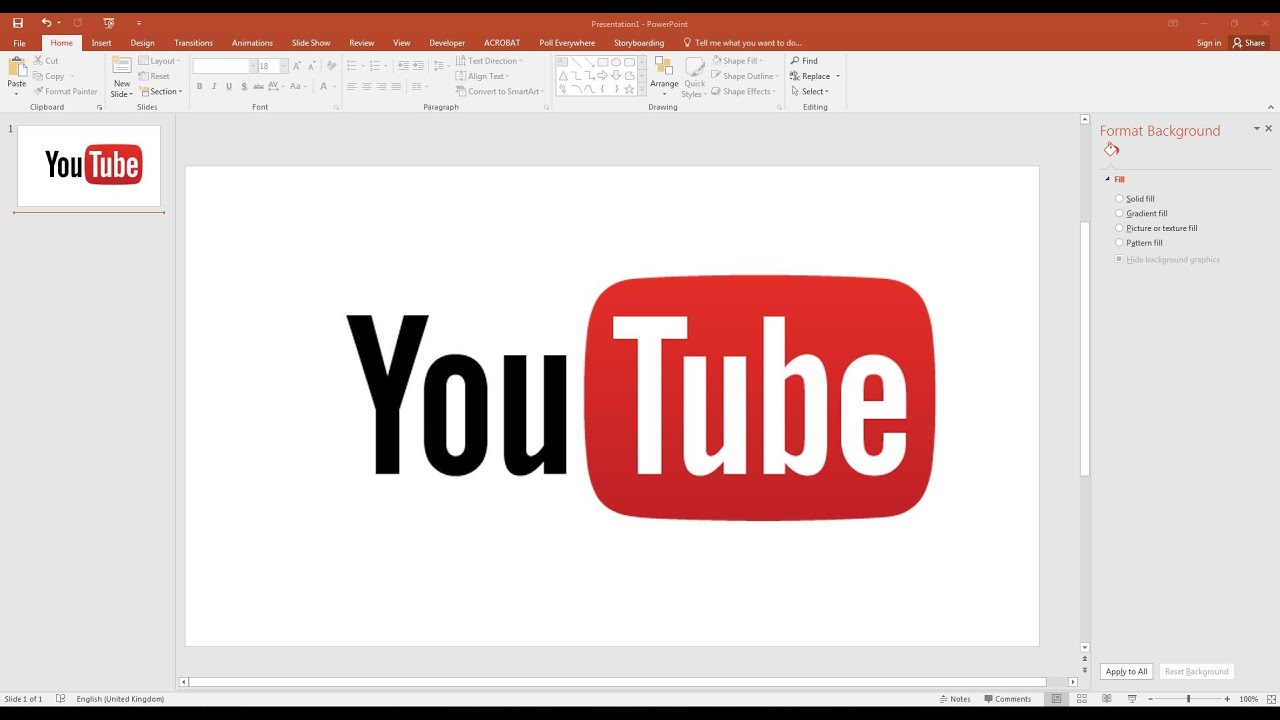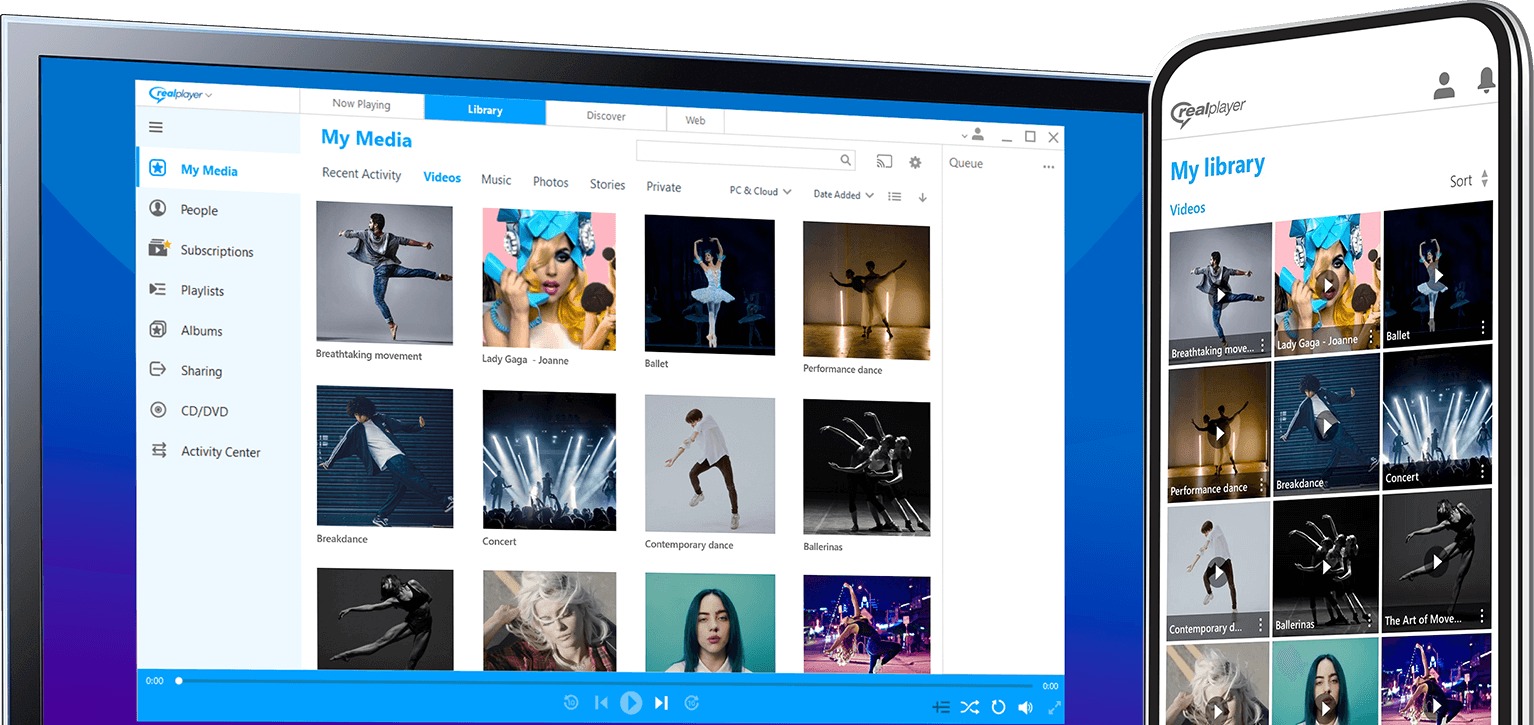Introduction
Have you ever come across a captivating video online that you wished to keep for offline viewing? Whether it’s a music video, a tutorial, or a funny clip, downloading videos onto your computer allows you to enjoy them at your own convenience, even without an internet connection. In this article, we will guide you through the process of downloading videos onto your computer, step by step.
Downloading videos on your computer is a simple and straightforward process, and with the right tools, you’ll be able to build up your own collection of favorite videos in no time. Whether you want to watch them during your commute, share them with friends, or simply store them for future reference, this guide will help you accomplish that.
Before we dive into the details, it’s important to note that downloading videos from unauthorized sources or without permission from the copyright holder may infringe on their rights. Make sure you only download videos that you have the legal right to access and store on your computer. With that said, let’s get started!
Step 1: Choose a video downloading software
To begin the process of downloading videos on your computer, you’ll need to select a reliable video downloading software. There are numerous options available, both free and paid, each with its own set of features and capabilities. Here are a few popular choices to consider:
- 1. Online video downloaders: These web-based tools allow you to download videos directly from websites without the need for additional software installation. Simply paste the video URL into the online tool, select your preferred settings, and initiate the download.
- 2. Dedicated video downloader software: These applications are specifically designed for video downloading purposes. They offer a range of features, such as batch downloading, video conversion, and the ability to download videos from multiple websites.
- 3. Browser extensions: For a more streamlined experience, you can opt for browser extensions that integrate directly into your web browser. These extensions provide convenient download buttons or options directly on the webpage, making it easy to download videos with just a click.
When choosing a video downloading software, consider factors like ease of use, download speed, format compatibility, and any additional features that may be important to you. Reading user reviews and checking for software updates can also help ensure that you select a reputable and reliable option.
Remember, always download software from official sources to avoid potential security risks and ensure that you have access to the latest updates and bug fixes.
Once you’ve chosen the video downloading software that best suits your needs, you’re ready to move on to the next step: installation. Stay tuned for the next section, where we’ll guide you through the process of installing your chosen software onto your computer.
Step 2: Install the chosen software
After selecting the video downloading software that meets your requirements, the next step is to install it onto your computer. The installation process may vary depending on the software you have chosen, but the overall procedure is generally straightforward. Here’s how to get started:
- Download the installation file: Visit the official website of the software and locate the download page. Look for the appropriate download link that corresponds to your operating system (e.g., Windows, macOS, or Linux). Click on the download link to initiate the download process.
- Open the installation file: Once the download is complete, locate the installation file in your computer’s downloads folder or the location where it was saved. Double-click on the file to open it.
- Follow the installation wizard: The installation process usually involves a step-by-step wizard that guides you through the setup. Read and accept any terms and conditions or license agreements, and choose the desired installation settings, such as the installation location and additional components you may wish to install.
- Complete the installation: Once you have configured the installation settings, click on the “Install” or “Next” button to begin the installation process. The software will then be installed onto your computer.
- Launch the software: After the installation is complete, you can typically find the software in your computer’s applications or programs folder. Double-click on its icon to launch the software.
It’s worth noting that during the installation process, you may be prompted to install additional software or browser extensions. Be cautious and only install the components that you trust and require for the video downloading software to function properly.
With the software successfully installed on your computer, you’re now one step closer to downloading your favorite videos. In the next section, we’ll guide you through how to properly launch the software on your computer. Stay tuned!
Step 3: Launch the software on your computer
Now that you have successfully installed the video downloading software on your computer, it’s time to launch the application and get ready to start downloading your favorite videos. Launching the software is a simple process, and here’s how you can do it:
- Locate the installed software: Open the applications or programs folder on your computer and look for the icon or name of the video downloading software that you installed in the previous step. It is typically represented by a recognizable logo or a descriptive name.
- Double-click on the software icon: Once you have located the software, double-click on its icon to launch it. This action will initiate the program and open the main interface on your computer screen.
- Wait for the software to load: Depending on the software and your computer’s performance, it may take a few moments for the video downloading software to fully load and be ready for use. Be patient and wait for the program’s interface to appear on your screen.
Once the software is launched and fully loaded, you will typically be presented with a user-friendly interface that provides various options and features for video downloading. Take a moment to familiarize yourself with the interface and explore the different menus and settings available. This will help you navigate through the software efficiently and make the most out of its capabilities.
If you encounter any issues while launching the software, double-check that it has been installed correctly and that all system requirements are met. Some software may require you to run it as an administrator or grant specific permissions for it to function properly.
With the video downloading software successfully launched on your computer, you are now ready to embark on the next step: searching for the video you want to download. Stay tuned for the upcoming section, where we will guide you through the process of finding the desired video. Happy downloading!
Step 4: Search for the video you want to download
With the video downloading software successfully launched on your computer, it’s time to search for the desired video that you want to download. Whether it’s a music video, a movie clip, a tutorial, or any other type of video, the software provides various options for finding videos from different sources. Here’s how you can search for the video you want:
- Enter keywords or the video title: Locate the search bar or search field within the video downloading software’s interface. It may be prominently displayed or accessible through a dropdown menu. Enter relevant keywords or the exact title of the video you’re looking for into the search bar. This will help the software identify and display relevant search results.
- Browse through the search results: Once you have entered your search query, the software will display a list of search results based on your input. Browse through the search results to find the specific video you wish to download. The search results may include details such as the video title, thumbnail image, duration, and source website.
- Refine your search: If the initial search results are too broad or not what you were looking for, you can refine your search by using additional keywords or applying filters. Many video downloading software allows you to filter search results based on criteria such as video duration, video quality, or source website.
- Select the video to download: Once you have located the desired video, click on it to select it for download. This will typically highlight the video and provide options for customization, such as choosing the video quality and download format.
It’s important to note that the availability and sources of videos may vary depending on the software you are using. Some software may support downloading videos from specific websites, while others may have broader compatibility with various video hosting platforms.
Make sure to exercise caution and only download videos from authorized sources or with proper permissions. Be mindful of copyright laws and respect the rights of content creators.
With the video selected for download, you’re now prepared for the next step: copying the video’s URL. Stay tuned for the upcoming section, where we’ll guide you through the process of copying the URL of the video you want to download. Happy searching!
Step 5: Copy the video’s URL
Once you have found the video you want to download using the video downloading software, the next step is to copy the URL (Uniform Resource Locator) of the video. The URL serves as the unique web address through which the video can be accessed. To copy the video’s URL, follow these steps:
- Select the URL: Located near the top of your web browser’s address bar, the video’s URL is typically displayed. Click once in the address bar to select the entire URL.
- Copy the URL: After selecting the URL, right-click on it and choose the “Copy” option from the contextual menu. Alternatively, you can use the keyboard shortcut Ctrl+C (Windows) or Cmd+C (Mac) to copy the URL.
- Confirm the copied URL: To ensure that the URL has been successfully copied, you can paste it into a text document or a text field, such as a notepad or a messaging app. Right-click in the document or text field and select the “Paste” option from the contextual menu. The URL should appear in the specified location.
It’s worth noting that some video downloading software may have built-in features that automatically detect the video’s URL when you access the video on a webpage. In such cases, there may not be a need to manually copy the URL as the software will handle it for you.
Copying the video’s URL is a crucial step as it allows the video downloading software to fetch the video from the specified web address. By having the URL readily available, you can proceed to the next step of pasting it into the software for the actual download process.
Now that you have successfully copied the video’s URL, it’s time to move on to the next step: pasting the URL into the video downloading software. Stay tuned for the upcoming section, where we will guide you through this process. Happy copying!
Step 6: Paste the video’s URL into the software
Now that you have copied the URL of the video you want to download, the next step is to paste it into the video downloading software. By doing so, the software will be able to process the URL and initiate the download process. Follow the steps below to paste the video’s URL into the software:
- Open the video downloading software: Launch the video downloading software on your computer if it’s not already open. Make sure you have the software’s interface visible on your screen.
- Locate the URL input field: Within the software’s interface, find the section or input field where you can paste the video’s URL. It is typically labeled as “URL,” “Paste URL,” or something similar. Sometimes, the software may have a designated button or icon to initiate the URL pasting process.
- Paste the URL: Right-click in the URL input field and select the “Paste” option from the contextual menu. Alternatively, you can use the keyboard shortcut Ctrl+V (Windows) or Cmd+V (Mac) to paste the URL into the input field.
- Verify the URL: Double-check that the pasted URL matches the original URL of the video you want to download. This step ensures that the software is directed to the correct video for downloading.
Once you have pasted the video’s URL into the software, the software will typically analyze the URL and display relevant information such as the video title, duration, and available download options. This information allows you to customize the video download settings, such as choosing the desired video quality or format.
It’s important to note that some video downloading software may automatically detect and process the copied URL when you open the software. In such cases, there may not be a separate step to paste the URL explicitly.
With the video’s URL successfully pasted into the software, you are now ready for the next step: selecting the desired video quality and format. Stay tuned for the upcoming section, where we will guide you through this process. Ready, set, paste!
Step 7: Select the desired video quality and format
After pasting the video’s URL into the video downloading software, the next step is to select the desired video quality and format for your download. Different videos may be available in various quality options, such as SD (Standard Definition), HD (High Definition), or even 4K (Ultra High Definition). Here’s how you can select the desired video quality and format:
- Review the available options: Once the software has processed the video’s URL, it will typically present you with a list of available download options. These options may include different video qualities, such as 720p, 1080p, or 4K, as well as various file formats, such as MP4, AVI, or WMV.
- Choose the desired video quality: Consider your preferences and the capabilities of your computer or device when selecting the video quality. Higher quality videos may provide a better viewing experience but also require more storage space and take longer to download. Select the video quality that meets your needs while keeping these factors in mind.
- Select the preferred format: Depending on the software, you may have the option to choose the output format for your downloaded video. Popular formats include MP4, which is widely supported and compatible with various devices, and MKV, which supports features like multiple audio tracks and subtitles. Make sure to choose a format that suits your intended playback device or application.
- Customize additional settings (if available): Some video downloading software may offer additional customization options, such as selecting specific audio tracks or subtitles if they are available. If these options are important to you, explore the software’s settings or preferences to make the necessary adjustments.
By selecting the desired video quality and format, you can ensure that the downloaded video meets your requirements for both viewing and storage purposes. Remember that higher quality videos tend to result in larger file sizes, so it’s important to have enough available storage space on your computer or device.
Once you have chosen the desired video quality and format, you’re now prepared for the next step: initiating the download process. Stay tuned for the upcoming section, where we’ll guide you through how to begin downloading the video onto your computer. Quality check, format set, let’s go!
Step 8: Begin the download process
Now that you have selected the desired video quality and format, it’s time to initiate the download process and start downloading the video onto your computer. The video downloading software will handle the actual downloading, and depending on the software, the process may vary slightly. Here’s how you can begin the download process:
- Check the download settings: Before initiating the download, double-check the download settings in the video downloading software. Ensure that the selected video quality, format, and any other preferences are correctly specified.
- Initiate the download: Look for a “Download” button, a “Start” button, or a similar option within the video downloading software’s interface. Click on it to begin the download process. Alternatively, some software may automatically start the download once you have selected the video quality and format.
- Monitor the download progress: After initiating the download, the software will typically display a progress bar, indicating the ongoing download process. This progress bar may show the download speed, the amount of data downloaded, and the estimated time remaining. Monitor the download progress to ensure that it completes successfully.
- Pause or cancel the download (if needed): Depending on the software, you may have the option to pause or cancel the download process while it’s in progress. This can be useful if you encounter any issues or if you need to free up network bandwidth for other tasks.
The duration of the download process will depend on various factors, such as the size of the video file, your internet connection speed, and the performance of your computer. Larger files and slower internet connections may result in longer download times. During the download process, it’s advisable to avoid interrupting your internet connection or closing the video downloading software to ensure a smooth download experience.
With the download process underway, you are now one step closer to having the video saved on your computer. In the next section, we will guide you on how to monitor the download progress and locate the downloaded video file. Stay tuned!
Step 9: Monitor the download progress
Once you have initiated the download process, it’s important to monitor the progress to ensure that the video is being downloaded successfully onto your computer. Monitoring the download progress allows you to keep track of how much of the video has been downloaded and estimate the remaining time. Here’s how you can effectively monitor the download progress:
- Observe the progress bar: Most video downloading software displays a progress bar or progress indicator that visually represents how much of the video has been downloaded. This bar may fill up gradually or display a percentage to indicate the download progress.
- Check the download speed: Watch for indicators of the download speed, which may be displayed in kilobytes per second (KB/s) or megabits per second (Mbps). Higher download speeds generally result in faster downloads.
- Estimate remaining time: Based on the download speed and the size of the video file, the software can estimate the time remaining for the download to complete. This estimation can give you an idea of how long it will take for the video to be fully downloaded.
- Pause or cancel the download (if needed): Depending on the software, you may have the option to pause or cancel the download process while it’s in progress. Pausing can be useful if you need to temporarily suspend the download and resume it later, while canceling stops the download completely.
While monitoring the download progress, it’s important to keep your computer and the software running without interruptions. Closing the software or disconnecting from the internet prematurely may interrupt the download and require you to start the process again.
If you encounter any issues during the download process, such as a slow download speed or a stalled download, you may want to troubleshoot your internet connection or check for any software updates or settings that could affect the download process. Additionally, ensure that you have sufficient free disk space on your computer to accommodate the downloaded video file.
With the download progress actively monitored, you’re now prepared for the final step: locating the downloaded video file on your computer. In the next section, we’ll guide you through this process. Keep an eye on that progress bar!
Step 10: Locate the downloaded video on your computer
After the download process has finished, the final step is to locate the downloaded video file on your computer. The exact location will depend on the settings of your video downloading software and your computer’s operating system. Here’s how you can easily find the downloaded video:
- Open the video downloading software: If the software is still open, switch back to its interface, as it may display a list of recently downloaded videos or have a dedicated section for downloaded files.
- Check the default download folder: By default, many video downloading software save downloaded files in a specific folder on your computer. Look for a folder named “Downloads” or a similar name, which is commonly located in your user directory or the main drive of your computer.
- Use the search function: If you’re having trouble locating the downloaded video, you can use the search function on your computer to search for the video file by its name or file extension. This can be especially helpful if you have changed the default download location.
- Consult the software’s settings: If all else fails, consult the settings or preferences of the video downloading software. There may be an option to specify the download location or to indicate where downloaded files are stored on your computer.
Once you have located the downloaded video file, you can play it using your preferred media player and enjoy it offline at your convenience. You may also wish to organize your downloaded videos by creating specific folders or adding tags to easily find them in the future.
Remember that downloading videos from unauthorized sources or infringing on copyright laws may be illegal and unethical. Ensure that you are downloading videos that you have the legal right to access and store on your computer.
Congratulations! You have successfully completed all the steps to download and locate a video on your computer. Now you can enjoy your downloaded videos whenever you want. Happy viewing!
Conclusion
Downloading videos onto your computer provides you with the freedom to enjoy your favorite videos at any time, even without an internet connection. Through the step-by-step process outlined in this guide, you have learned how to download videos on your computer effectively. Let’s recap the key points:
First, you chose a video downloading software that best suits your needs. Whether it’s an online downloader, dedicated software, or a browser extension, selecting the right tool is essential for a smooth downloading experience.
Then, you installed the chosen software onto your computer, ensuring that you downloaded it from official sources to avoid potential security risks. Once installed, you launched the software and familiarized yourself with its interface and features.
Afterwards, you searched for the desired video within the software, copying its URL to prepare for the download. Pasting the URL into the software enabled you to select the desired video quality and format, ensuring that it meets your preferences and playback requirements.
With all the settings in place, you initiated the download process, closely monitoring the progress to ensure a successful download. Lastly, you located the downloaded video on your computer, either by checking default download folders or using the search function if needed.
Remember to only download videos from authorized sources and respect copyright laws. Ensure that you have the legal right to access and store the videos on your computer.
With these steps, you are now equipped with the knowledge to download videos on your computer and enjoy them offline at your convenience. Happy video downloading and viewing!

























